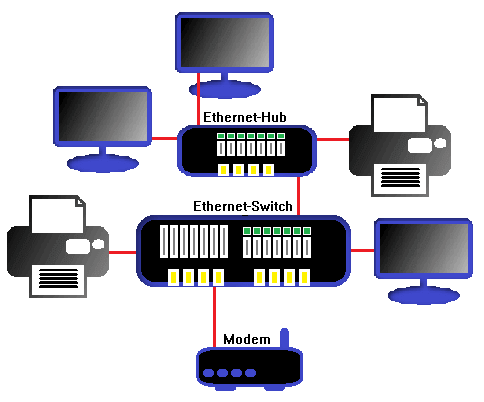Introduction to the Physical Layer
Understanding the Physical Layer
The Physical Layer is the first of the seven layers in the OSI (Open Systems Interconnection) model, and it serves as the bedrock upon which all other networking layers are built. Its primary purpose is to manage the physical connection between devices and to transmit raw bits over a physical medium, whether it's through cables, optical fibers, or wireless signals.
Key Functions of the Physical Layer
-
Bit Encoding: This layer encodes digital data into signals suitable for transmission over a specific physical medium. For instance, it converts binary data into electrical voltages for transmission over copper wires.
-
Signal Transmission and Reception: The Physical Layer handles the actual transmission of signals onto the medium and their reception at the other end. This includes tasks like signal modulation and demodulation.
-
Data Rate Control: It determines the data transmission rate, also known as the baud rate or symbol rate. This rate defines how quickly data is transmitted over the medium.
-
Physical Topology: The Physical Layer defines the physical layout or topology of the network, whether it's a star, bus, ring, or mesh network.
-
Medium Types: It supports various physical media types, such as copper (Ethernet), optical fibers, and wireless (Wi-Fi, Bluetooth).

Real-World Examples of the Physical Layer
Let's look at a few real-world examples of the Physical Layer in action:
-
Ethernet (IEEE 802.3): Ethernet is one of the most common networking technologies used in Local Area Networks (LANs). It operates primarily in the Physical Layer and is responsible for transmitting data over copper or optical fiber cables. Ethernet specifies the physical characteristics of cables, connectors, and signal encoding methods.
-
Fiber-Optic Communications: In long-distance and high-speed networks, such as those used by internet service providers, optical fibers are the medium of choice. The Physical Layer here involves encoding data into light pulses, transmitting them through the fibers, and converting them back into data at the receiving end.
-
Wireless Communications: Wi-Fi, Bluetooth, and cellular networks operate in the radio frequency spectrum and rely heavily on the Physical Layer. The layer handles the transmission and reception of radio waves, ensuring data reaches its destination reliably.
-
USB (Universal Serial Bus): USB is a technology used for connecting various peripherals like keyboards, mice, and external storage devices to computers. The Physical Layer of USB manages the electrical signaling and physical connectors, ensuring devices can communicate seamlessly.
Conclusion
The Physical Layer may seem straightforward, but it's the backbone of networking. Without it, all the higher layers of the OSI model would be unable to function. It manages the nuts and bolts of data transmission, ensuring that your emails, web pages, and video calls can traverse the complex web of interconnected devices and networks. Understanding the significance of the Physical Layer is the first step in comprehending the intricate world of computer networking.



















0 Comments